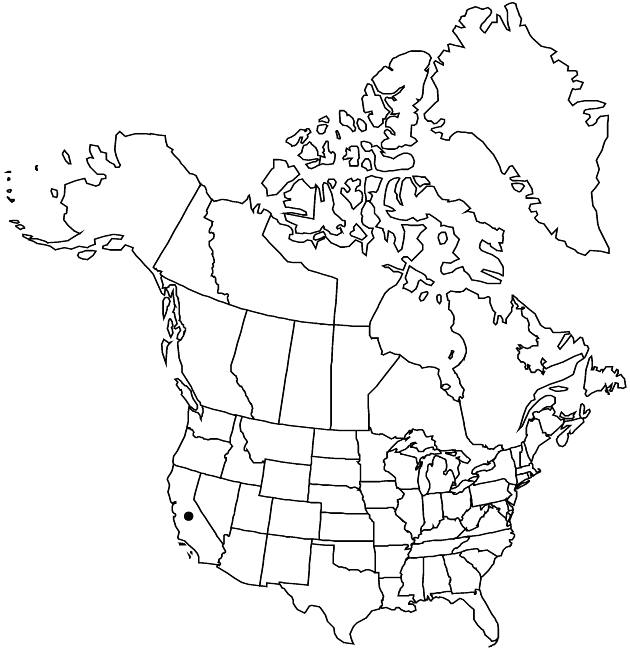Agnorhiza bolanderi
Phytologia 85: 19. 1999.
IllustratedEndemic
Basionym: Balsamorhiza bolanderi A. Gray Proc. Amer. Acad. Arts 7: 356. 1868
Synonyms: Wyethia bolanderi (A. Gray) W. A. Weber
Plants (10–)15–30 cm. Stems decumbent, seldom distally branched. Cauline leaves: blades oblong, ovate, rounded-deltate, or suborbiculate, 4–12 cm, bases ± truncate or cordate, margins entire, faces glabrous (shining, finely gland-dotted, ± glutinous). Heads held among or beyond leaves. Involucres ± campanulate, 15–25(–30+) mm diam. Outer phyllaries ovate to ovate-lanceolate, 10–40+ mm (seldom surpassing ray corollas). Ray florets (7–)8–12, laminae (12–)20–30(–35) mm. Cypselae 7–9 mm, glabrous; pappi 0 or coroniform, 0.1–0.3 mm. 2n = 38.
Phenology: Flowering Mar–Apr(–May).
Habitat: Openings in chaparral
Elevation: 600–800 m
Distribution
Loading map...

Calif.
Discussion
Agnorhiza bolanderi is known only from the foothills of the Sierra Nevada, where it evidently grows only on serpentine soils.
Selected References
None.
Lower Taxa
None.
